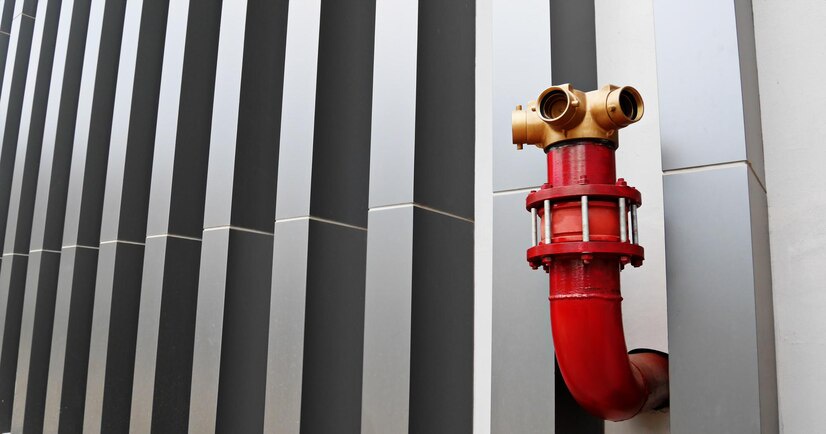Introduction
Fire sprinkler systems are indispensable assets for protecting properties from the devastating impact of fires. Whether it's a residential home, commercial building, or industrial facility, selecting the appropriate fire sprinkler system is crucial to ensure effective fire protection tailored to the specific needs and risks of the property. In this article, we delve into the key factors to consider when choosing a fire sprinkler system, exploring different types, design considerations, regulatory requirements, and emerging technologies.
Understanding Fire Sprinkler Systems
Fire sprinkler systems are active fire protection measures designed to detect and suppress fires in their early stages, preventing their rapid escalation and minimizing property damage, injuries, and loss of life. These systems consist of a network of pipes, sprinkler heads, control valves, and alarm devices strategically installed throughout a building to provide comprehensive coverage and rapid response to fire incidents.
Types of Fire Sprinkler Systems
There are several types of fire sprinkler systems available, each designed to address specific fire hazards and occupancy requirements:
Wet Pipe Systems: The most common type of fire sprinkler system, wet pipe systems contain pressurized water in the pipes, ready to discharge immediately upon activation of the sprinkler heads. They are suitable for use in heated spaces where freezing is not a concern.
Dry Pipe Systems: Dry pipe systems utilize compressed air or nitrogen to keep water out of the pipes until a sprinkler head activates, at which point the air is released, allowing water to flow into the system. These systems are ideal for unheated areas prone to freezing, such as parking garages or warehouses.
Pre-action Systems: Pre-action systems combine elements of both wet and dry pipe systems, requiring two stages of activation before water is discharged. They are commonly used in areas where accidental activation could cause significant damage, such as computer rooms, museums, or libraries.
Deluge Systems: Deluge systems feature open sprinkler heads that release large volumes of water simultaneously when triggered by a fire detection device. They are suitable for high-hazard areas with rapid fire spread potential, such as chemical storage facilities or aircraft hangars.
Factors to Consider When Choosing a Fire Sprinkler System
Several factors must be taken into account when selecting the right fire sprinkler system for a property:
Property Type and Occupancy: The type of property and its occupancy classification significantly influence the choice of fire sprinkler system. Residential buildings, commercial offices, warehouses, manufacturing facilities, and healthcare facilities each have unique fire protection requirements based on occupancy load, fire hazards, and regulatory mandates.
Risk Assessment: Conducting a thorough risk assessment helps identify specific fire hazards and potential ignition sources within the property. Factors such as the presence of flammable materials, electrical equipment, cooking facilities, or storage arrangements influence the selection of an appropriate fire sprinkler system.
Local Regulations and Codes: Compliance with local building codes, fire safety regulations, and industry standards is essential when designing and installing a fire sprinkler system. Building codes dictate requirements for system design, installation, testing, and maintenance to ensure adequate fire protection and life safety measures are in place.
Water Supply Availability: The availability and adequacy of water supply play a critical role in determining the feasibility of certain fire sprinkler systems. Factors such as water pressure, flow rate, and access to a reliable water source influence the selection of system type and design.
Environmental Considerations: Environmental factors, such as temperature extremes, humidity levels, corrosive atmospheres, or seismic activity, may impact the performance and durability of fire sprinkler systems. Specialized coatings, materials, or design features may be required to mitigate these environmental challenges.
Emerging Technologies in Fire Sprinkler Systems
Advancements in fire sprinkler technology continue to enhance system performance, reliability, and efficiency. Some notable innovations include:
Smart Sprinkler Systems: Smart sprinkler systems incorporate sensors, IoT connectivity, and data analytics to provide real-time monitoring, predictive maintenance, and remote control capabilities. These systems offer enhanced reliability, reduced false alarms, and improved response times.
Low-Flow Sprinkler Heads: Low-flow sprinkler heads utilize innovative design features to deliver comparable fire suppression performance with reduced water consumption. These eco-friendly solutions help conserve water resources while maintaining effective fire protection.
Specialized Suppression Agents: Developments in suppression agents, such as environmentally friendly foams, clean agents, or hybrid systems, offer tailored solutions for specific fire hazards, including flammable liquids, electrical fires, or high-value assets.
Conclusion
In conclusion, choosing the right fire sprinkler for your property requires careful consideration of various factors, including property type, occupancy classification, risk assessment, regulatory requirements, water supply availability, and environmental considerations. By understanding the different types of fire sprinkler systems available, their design principles, and emerging technologies, property owners and facility managers can make informed decisions to ensure effective fire protection tailored to the specific needs and risks of their properties. Investing in a reliable and well-designed fire sprinkler system is a proactive measure to safeguard lives, property, and business continuity in the event of a fire emergency.


No comments yet